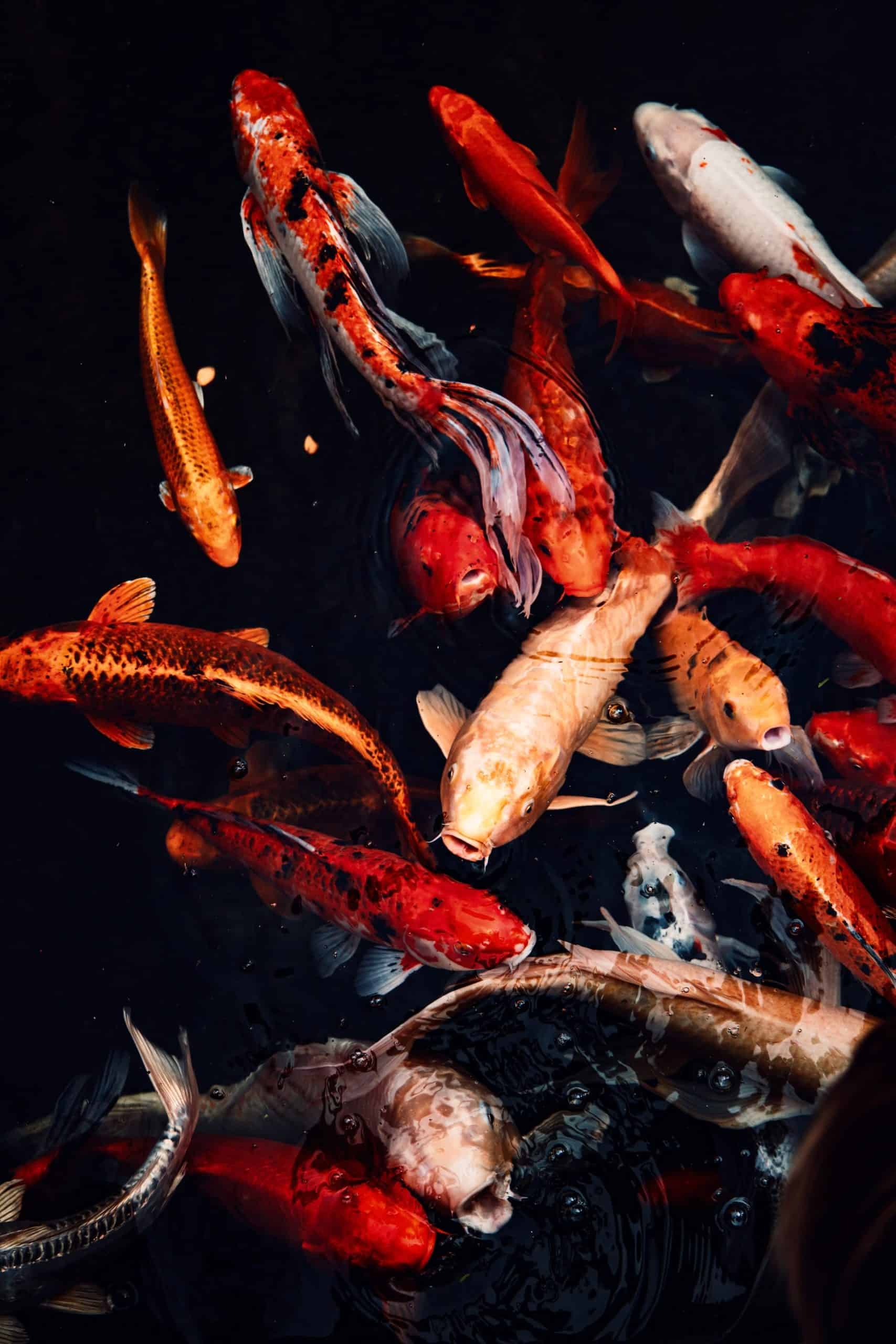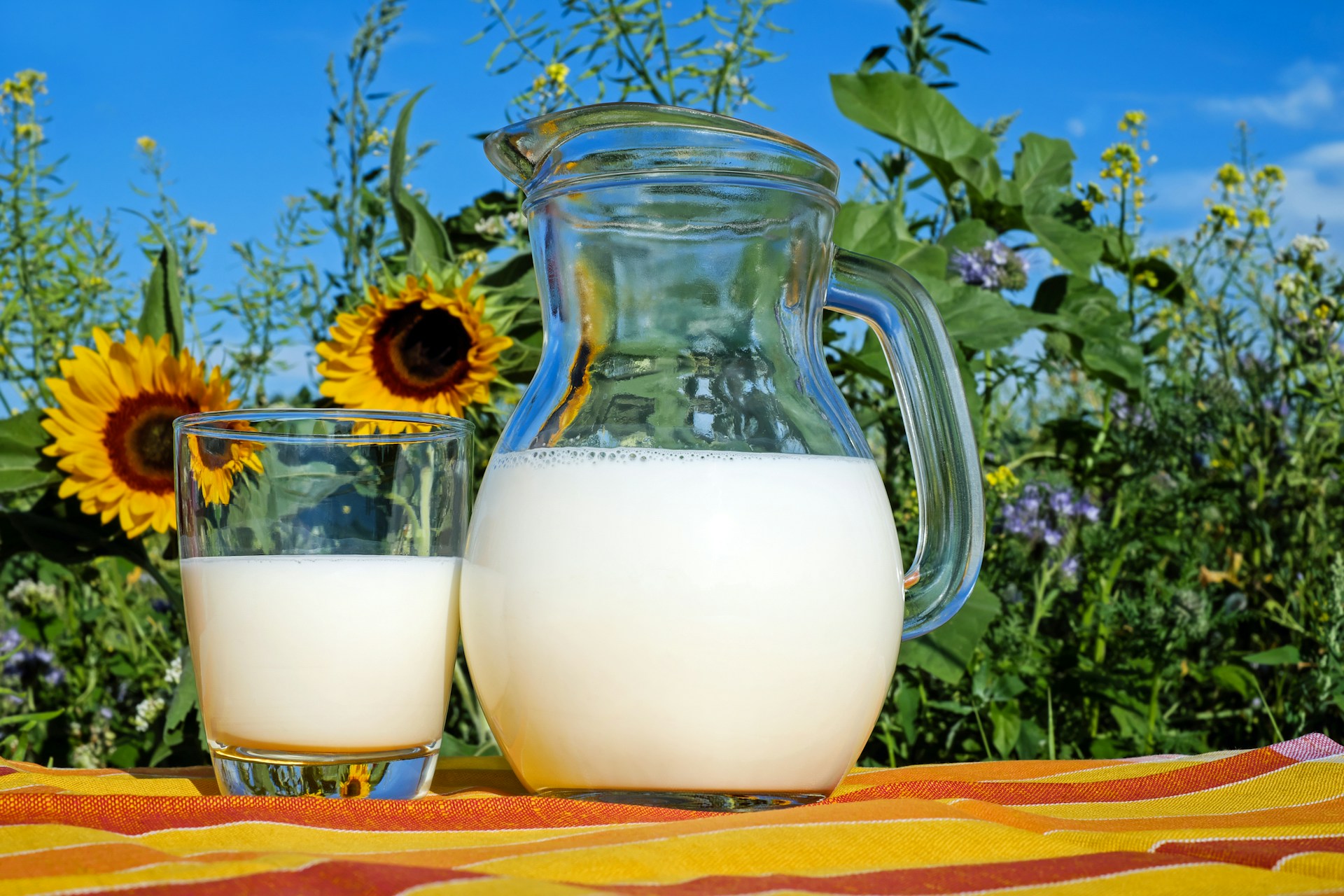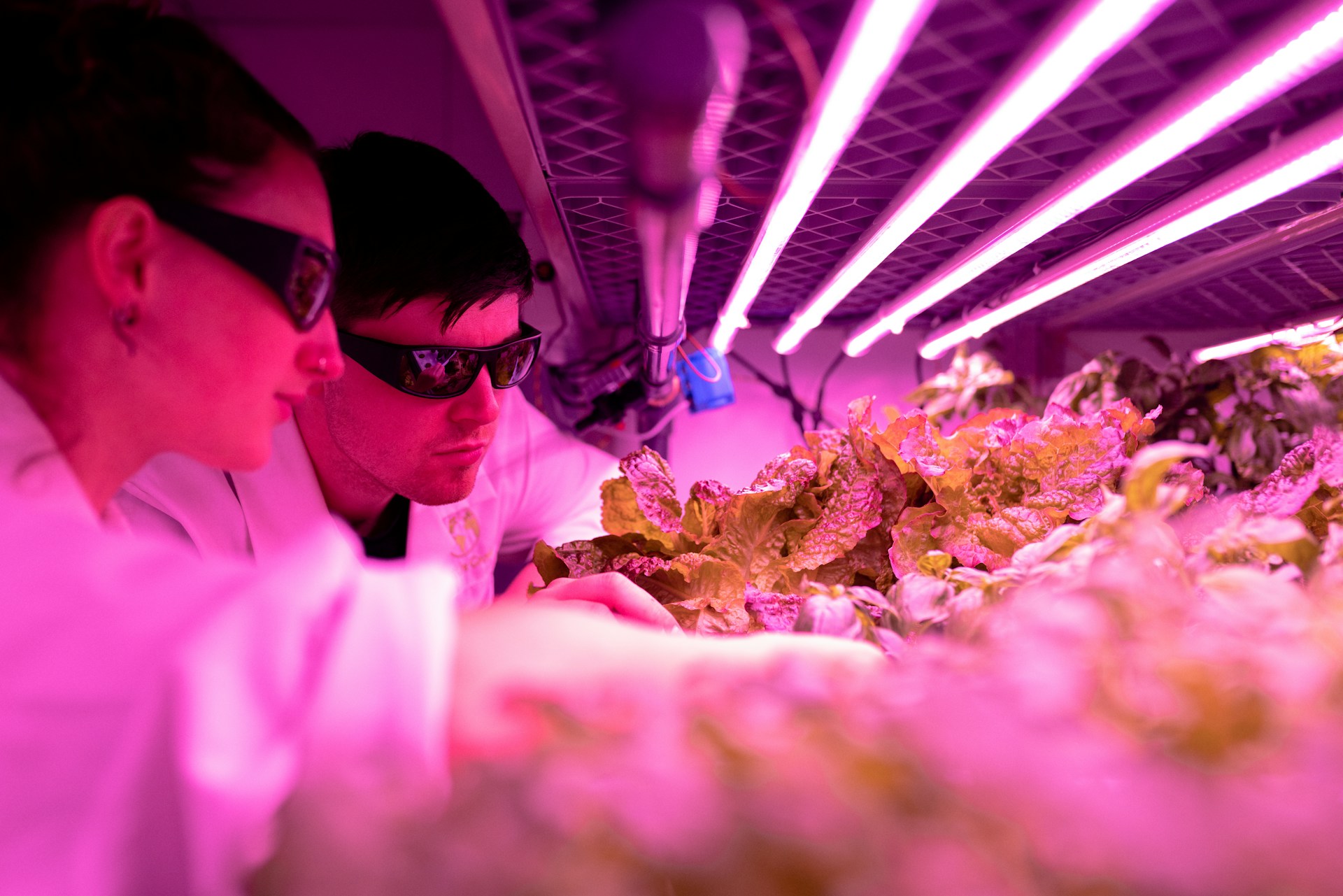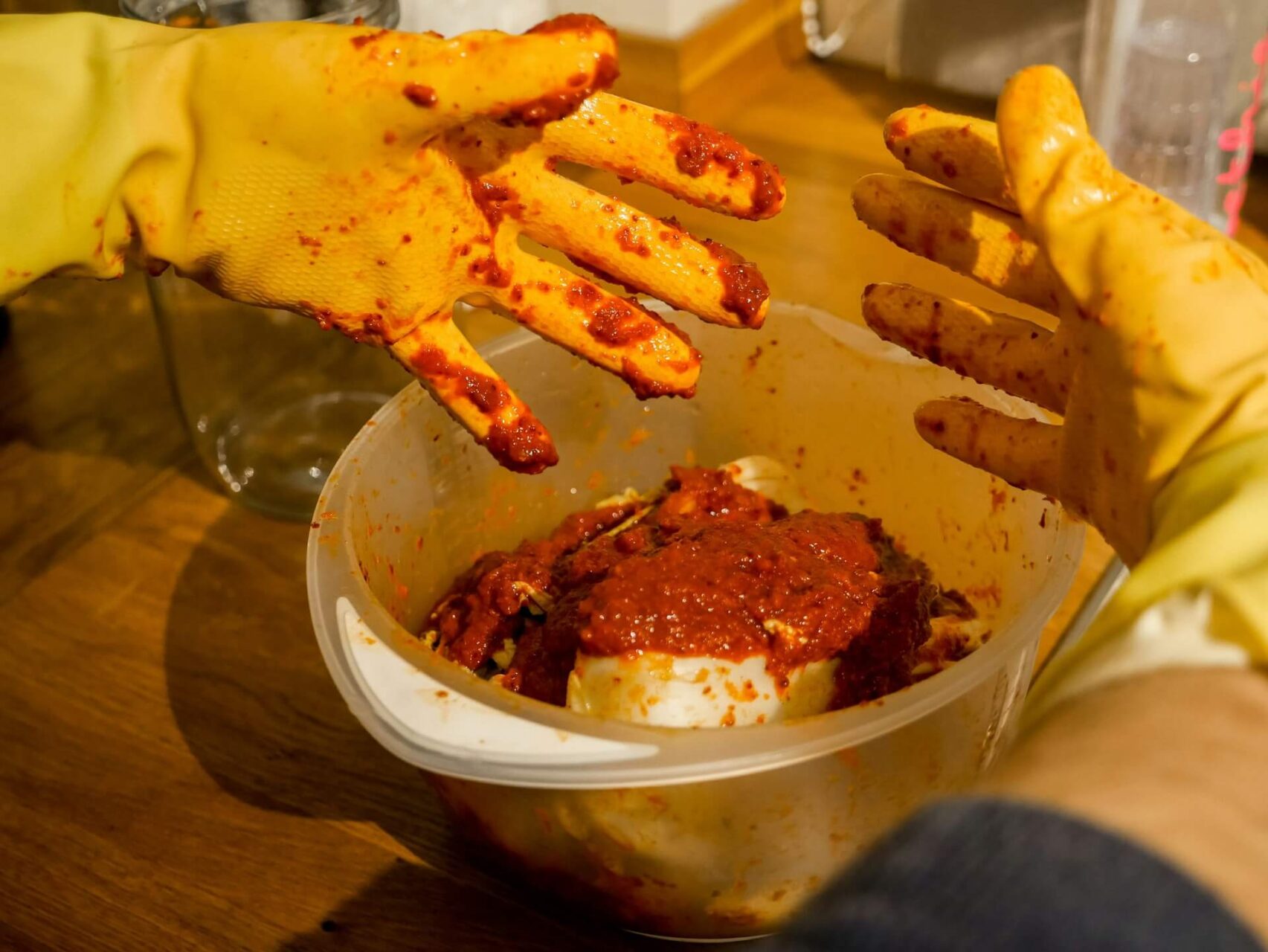
Which Species to Raise in an Aquaponics System
March 3, 2023 - Lou Farrell
Revolutionized is reader-supported. When you buy through links on our site, we may earn an affiliate commission. Learn more here.
An aquaponics system combines hydroponics and aquaculture. By raising fish and plants in the same system, farmers can improve their output, minimize growing space and save water. Some species perform better in aquaponic environments than others. Here are the plants and fishes that thrive in water tanks while providing valuable food or fertilizer.
The Best Fish Species for an Aquaponics System
Some species just aren’t cut out for aquaponics. Salmon, for example, which consume four times more protein than they produce and require near-freezing saltwater, don’t mesh well with the conditions needed for growing plants. Neither do tuna, which require vast amounts of space and must keep swimming forward to breathe.
Only a handful of fishes make the cut. In general, the species best suited for aquaponics systems live in fresh water and don’t need a lot of space. Here are seven fishes that thrive in captivity:
1. Tilapia
Tilapia is the most common fish raised in aquaponics systems. In addition to their mild, tender meat, tilapia are also very hardy — they can survive in a wide range of temperatures, tolerate mediocre water quality and don’t mind low oxygen or high ammonia levels. Their strong resistance to diseases and parasites is another valuable quality that makes them shine as a farmed fish.
2. Carp
These stocky, omnivorous fish grow quickly in both warm and cold water. They tolerate poor water quality and eat a wide range of foods, enjoying everything from invertebrates to plants. Farmers commonly raise three different species that are all called carp: common carp (Cyprinus carpio), silver carp (Hypophthalmichthys molitrix) and grass carp (Ctenopharyngodon idella).
3. Bluegill
These fish are hardy generalists that thrive in a wide range of conditions. They don’t require heated water and can tolerate pH levels from 6.5 to 8.5. Bluegill eat seeds, plants, insects and algae. They also grow relatively large and provide firm, delicious meat.
4. Catfish
Catfish grow slowly but reproduce quickly. Happy to share their space with others, they’re not territorial, making them ideal for fish farms. They grow very large and are easy to acquire from hatcheries. Like all fishes suited to aquaponics systems, they tolerate a broad temperature spectrum. Many people also enjoy eating catfish.
5. Pacu
Several species share this name, but the common aquaponics species is Piaractus mesopotamicus. Similar in appearance to their close relative, the piranha, pacu are omnivorous fish that produce delicious white flesh. In 2016, 52% of Argentina’s aquaculture output was pacu meat. Pacu tolerate close confinement and will readily eat formulated feed.
6. Koi
Koi are the colorful variety of Cyprinus rubrofuscus, the Amur carp. They are hardy coldwater fish that enjoy a wide variety of foods. Strongly resistant to diseases and parasites, koi thrive in aquaponic environments and will help keep the tanks clean of algae. Although uncommon in American cuisine, many cultures feature koi fish on the menu, citing their soft texture and sweet, light-tasting meat.
7. Ornamental Fishes
Some fishes don’t provide meat, but still do remarkably well in aquaponic environments and help fertilize the plants. Such species include guppies, tetras, angelfish and mollies. They are common, beginner-friendly aquarium fish that are cheap to obtain from pet stores.
The Best Plant Species for an Aquaponics System
Hydroponics — the practice of growing plants directly in water — is a thriving industry. Experts suggest it will be worth $16.03 billion within the next two years, and coupling it with raising fish makes it even more efficient. These plants do particularly well in aquaponics systems:
1. Radishes
These crisp vegetables prefer cool temperatures, so they pair well with fishes like tilapia and koi. They grow very well in wicking beds that allow their roots to soak up water without getting the entire plant wet. Many farmers consider them one of the easiest crops to grow hydroponically.
2. Lettuce
A classic of hydroponic and aquaponic setups, lettuce — along with many other leafy plants — thrives when grown directly in water. This crunchy vegetable is a beginner-friendly crop for burgeoning aquaponic gardeners. It matures quickly, tolerates a range of water temperatures and overall takes very little effort to produce. Lettuce can also grow in fairly crowded conditions and won’t outcompete the surrounding plants.
3. Broccoli
This cruciferous vegetable yields a lot of nutrients in a relatively small growing area. In aquaponics systems, it grows best in a media bed with a flood and drain system. It’s too heavy to grow on a typical floating raft setup. It does best with a pH level of 6 to 7, making it ideal for pairing with most aquaponic fish species.
4. Carrots
As long as they receive six to eight hours of light per day, carrots can grow in aquaponics systems. They perform best in wicking beds that distribute nutrients from below the roots. Carrots require a neutral pH to thrive.
5. Cabbage
This leafy vegetable is hardy and low maintenance. It grows best in media beds due to its large size, and it can tolerate cool temperatures as long as it gets adequate light. Some types of cabbage can even survive winter frost. Cabbage does best at a pH of 6.2 to 6.6.
6. Kale
Kale is another cool-weather crop that does well in aquaponics systems. It needs a pH between 6.5 and 7, thrives between 55 and 77°F and grows quickly — even with very little attention — in the water. Its nutritional properties make it a popular choice of vegetable for hydroponic gardening.
7. Cauliflower
Due to its weight, it’s best to grow cauliflower in a media-based setup with a flood and drain system. It’s a challenging crop to grow due to its specific growing needs, including adequate spacing, high nutrient demand and strict temperature control. However, as long as gardeners meet these requirements, cauliflower thrives in an aquaponics setup.
The Best of Both Worlds
An aquaponics system couples gardening with aquaculture. By growing plants directly on the water and allowing fish to fertilize them, the result is a two-for-one harvest of both meat and vegetables.
The species that perform best in aquaponic environments tolerate low oxygen and high ammonia, can handle a wide range of temperatures and have minimal space requirements. Ideally, they are also resistant to parasites and disease. And, of course, one other quality makes certain species good candidates for aquaponics — tasting delicious.
Revolutionized is reader-supported. When you buy through links on our site, we may earn an affiliate commission. Learn more here.
Author
Lou Farrell
Lou Farrell, Senior Editor, is a science and technology writer at Revolutionized, specializing in technological advancements and the impacts on the environment from new developments in the industry. He loves almost nothing more than writing, and enthusiastically tackles each new challenge in this ever-changing world. If not writing, he enjoys unwinding with some casual gaming, or a good sci-fi or fantasy novel.







Good information but managing it in different environments may not be a piece of cake.
I’m trying to start in door fish farm .
Witch will bring me into aqua phonics.